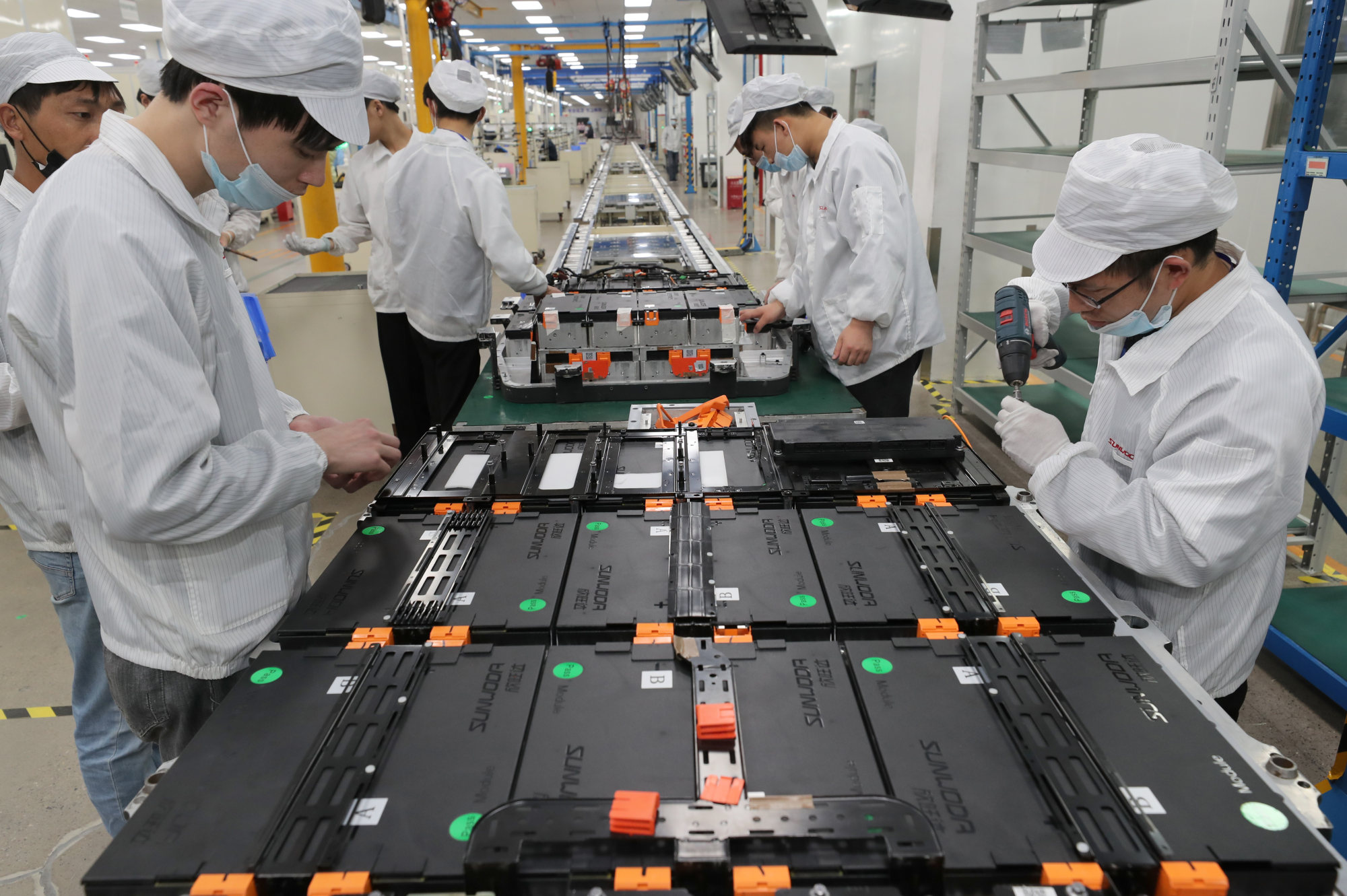
Green energy war: dominant Chinese exporters of EVs, batteries and solar panels face trade barriers, Natixis says
- China’s dominance will be challenged by industrial policies and tariffs globally, not only in the West, Natixis analysts say in report
- Outlook is less rosy, given signs of a domestic market slowdown and rising trade barriers overseas, Chief Economist Alicia Garcia-Herrero tells the Post
China’s global dominance in the production of three key energy transition products – electric vehicles (EVs), batteries and solar panels – will face more challenges this year from industry overcapacity, price wars and trade barriers, French bank Natixis said.
Export growth of these “new three” sectors, a term coined a year ago by Chinese state media to describe the three rising stars of mainland Chinese exports, will run into constraints after the country saw the value of EV exports nearly quadruple to around US$38 billion last year from two years ago, analysts at the French bank said.
Meanwhile, solar panel exports rose by around 40 per cent to US$42 billion and battery exports more than doubled to US$66 billion over the same time frame. Together, they account for 4.5 per cent of China’s total exports currently.
“China’s dominance will be challenged by industrial policies and tariffs globally, which do not only come from the West but also other countries, such as India and Turkey,” the Natixis analysts said in a report.
“The world will face a question of balancing cost-effective green transition goods from China and supply-chain security.”
By establishing first mover advantage through aggressive capacity expansion supported by subsidies, tax incentives and build out of full supply chain capabilities, China has dominated the production of various manufactured goods needed for the green energy transition, they added.

Last year, it accounted for 53 per cent of global EV production, 62 per cent of battery output and 94 per cent of solar panel manufacturing, mostly fuelled by rapid growth in domestic sales, the analysts said.
This year, the outlook is less rosy, given signs of a domestic market slowdown and rising trade barriers overseas, Alicia Garcia-Herrero, Natixis’ Asia-Pacific chief economist, told the Post.
Chinese EV battery giant CATL expects 2023 profit surge as it sees off rivals
The European Commission a year ago proposed the “Net Zero Industry Act” legislation to achieve a region-wide self-sufficiency ratio of at least 40 per cent in the manufacturing capacity for net-zero technologies by 2030. A provisional agreement was reached last month, pending formal adoption.
In the batteries sector, US policies and incentives promoting onshoring of production and policies driven in the name of supply security in other markets mean “it may not be easy for Chinese firms to grow their exports at a certain tipping point”, said Natixis senior economist Gary Ng.

“Increasingly we will see South Korean manufacturers set up factories in the US and other places to produce,” he said.
China’s clean energy sectors were the biggest growth drivers of its economy in 2023: CREA
In the US, Washington might impose new steep import duties as soon as June on Chinese exporters that circumvented anti-dumping duties by moving downstream operations from China to Southeast Asia, Mu said.
The China Photovoltaic Industry Association last Wednesday forecast domestic solar farm installation to ease to 190 to 220 gigawatts (GW) this year, after jumping 148 per cent to 217GW last year, mainland media outlet Jiemian reported, citing association chairman Wang Bohua.
Chinese panels and parts exports jumped by 38 to 94 per cent in volume last year, but the total value of exports fell 5.4 per cent to US$48.5 billion, according to the association.

